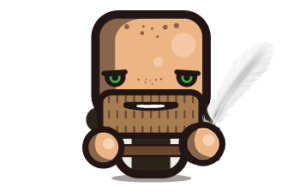- My Account
- Place a Reorder
- Logout

Tips for Managing Neurogenic Bladder Symptoms
Medical Monks Staff
Living with a neurogenic bladder can be overwhelming, and managing symptoms can sometimes seem almost impossible. Feeling like you’re constantly running for the toilet is no way to live your life!
Don’t despair — effectively managing your condition does not have to feel intimidating. In fact, there are ways to make it so you barely have to worry about it day-to-day. Often, it’s a matter of taking it one step at a time with a warm and friendly approach. Soon enough, you can live your life to the fullest even with this condition.
What is a Neurogenic Bladder?
A neurogenic bladder, also known as Neurogenic Lower Urinary Tract Dysfunction, occurs when the nervous system is damaged due to an illness or disease, disrupting the bladder’s function. In other words, a person loses bladder control because of a spinal, brain, or nerve problem. In a correctly functioning body, the muscles and nervous system work together to hold and release urine. However, if the nerves are harmed, the muscles won’t tighten or relax while urinating. The result is a bladder not filling or emptying correctly.Symptoms of a Neurogenic Bladder
The common signs of neurogenic bladder may be different from one person to another, depending on which nerve has been damaged. Common neurogenic bladder symptoms are as follows:- Leaking urine: This is most common during sleep, but can also happen during waking hours. In mild cases of urinary incontinence urine may leak only from time to time. In severe cases (paralysis, etc…) there can be total loss of control/open floodgates.
- Urinary Tract Infection: UTIs are prevalent in people with a neurogenic bladder. People with an overactive or underactive bladder will often get repeated UTIs due to the harmful bacteria, yeasts, and fungi growing in the urinary tract.
- Urine dribbles: If you have an underactive bladder, you may be unable to empty your bladder fully, or at all. This is common among people with illnesses such as diabetes and polio, or those who have undergone significant surgery in the pelvis.
- Passing urine more often: Passing uring very often – more than eight times in 24 hours – is a sign of neurogenic bladder.
How to Effectively Manage a Neurogenic Bladder
Following your diagnosis, you’ll have to begin with the proper neurogenic bladder treatment so that you can control the symptoms while preventing further kidney damage. Though this condition isn’t curable, patients will see a significant improvement after treatment. First, your doctor will create an action plan based on the following factors:- Medical history, overall health, age and allergies
- Severity of symptoms
- Progression of the underlying condition and its effects, such as nerve damage
Lifestyle Changes
The first step of treatment of neurogenic bladder is by undergoing some lifestyle changes, especially if you only have less nerve damage. You can implement these changes in your daily routine to successfully overcome the symptoms. Some examples are the following:- Limit what you’re eating and drinking: Certain foods and beverages may be irritating your bladder and worsening your symptoms. Using a process of elimination, determine which of them is affecting your condition and cut it out of your diet.
- Scheduled voiding: Try to visit the bathroom only at set times, instead of going right when the urgent hits. This includes times that you’re not feeling the urge. That way, you can try to establish a set routine.
- Double voiding: After passing urine, wait a while – between a few seconds and a full minute. Afterward, relax, then try to empty the last few drops. This process is ideal for those having difficulty passing urine or emptying their bladder.
- Delayed voiding: For overactive bladders, delay your urination if possible. The goal will be to increase the wait time from a few minutes to a few hours, creating a routine.
- Pelvic floor exercises: Pelvic floor exercises can help regulate your urinary schedule by strengthening your sphincter muscles. They can also help relax your bladder once it starts squeezing.
Medical Treatments
If lifestyle changes aren’t helping, your doctor will recommend trying other options. For instance, you may be prescribed OAB drugs to help relax your overactive bladder muscles. The medication can be taken orally. Other people prefer a gel version or skin patch. Alternatively, your doctor may recommend catheterization. A catheter is a small tube inserted into the urethra to aid your bladder in emptying fully. Types include:- Intermittent Catheters: These are inserted into your urethra multiple times a day as needed. It will depend on your symptoms, but your doctor will likely ask you to catheterize three or four times a day. Some popular examples of intermittent catheters are SpeediCath Flex Coudé Pro, SpeediCath Soft, and VaPro Plus Pocket.
- Foley Catheters: A foley, also known as an indwelling catheter, is left in the bladder long term and drains urine continuously. It can either be attached in your belly through a surgery or placed through the urethra. It must be replaced every four to six weeks.
Live Life with a Neurogenic Bladder
At Medical Monks, you can find products to help treat your condition, including intermittent and foley from trusted brands. These products are designed to help you live a normal life with a neurogenic bladder. They are also easy to use and give you the safety and comfort you want.
The MEDICAL MONKS STAFF brings to the table decades of combined knowledge and experience in the medical products industry.
Edited for content by ADAM PAGE. Edited for medical accuracy by KRISTIN ARANGO, BSN, RN.
Related Videos
More Blogs
Top Urology Products




